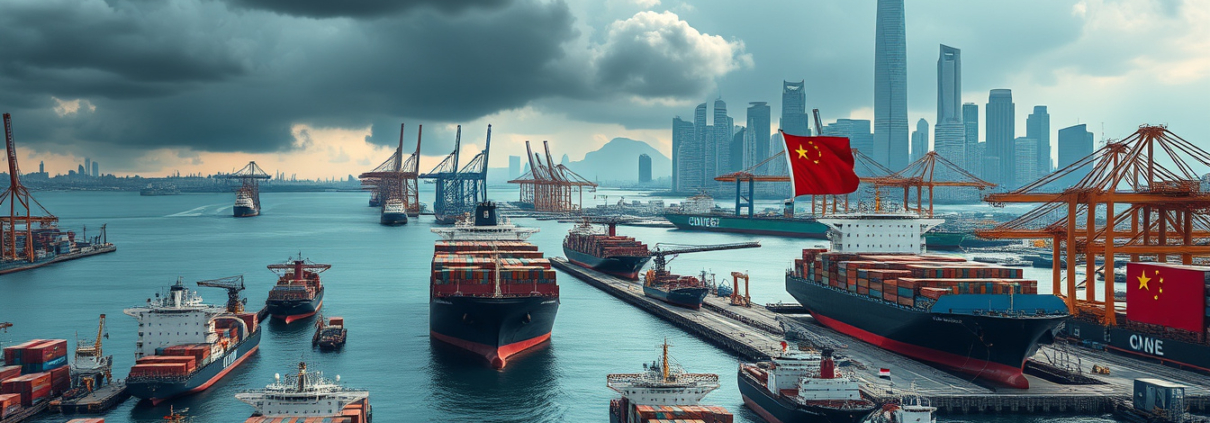Escalating Trade Tensions and Market Volatility: China’s Strategy as 90-Day Truce Nears Its End
China: Trade Tensions Rise as Truce Nears Expiry, Markets Face Fresh Risks
By Bob Mason — September 4, 2025, 04:21 GMT
The 90-day trade war pause between the United States and China ends in October. Tensions grow and new risks shake global markets. China shows signs of worry as unemployment climbs, consumer demand fades, and investors act with care on Mainland and Hong Kong exchanges.
Strengthening BRICS Ties and Global Trade Changes
At the recent SCO Summit, China built stronger ties with BRICS nations. Leaders from Russia, India, and North Korea met here. This move shifts China’s focus away from depending on the US in trade. President Xi Jinping spoke of using the shared strength of SCO members to boost trade and investment. His words stressed the power of their large markets and matched economic roles.
The US did not like the outcome. President Trump made a sarcastic comment. He said, "give my warmest regards to Vladimir Putin and Kim Jong Un, as you conspire against the United States of America." His tone pointed to a tougher US stance after months of calm.
Changing Trade Paths and Export Shifts
After the US extended the truce in August, China’s trade hopes grew for a full agreement. Meetings between Chinese negotiator Li Chenggang and US officials did not bring clear progress. Trade tensions came back as the truce nears its end in October.
China now tries to widen its export markets. It targets Southeast Asia and nearby regions to make up for fewer shipments to the US. Leland Millar, CEO of China Beige Book, said in a Bloomberg interview that China pushes its exports into new markets. His words show that China sells goods at lower prices in these countries. The move sends extra capacity into markets that seem weak in money and politics.
Mounting Economic Pressures
Exports rose by 7.2% in July, compared to 5.8% in June. Yet, data from the private sector shows caution. The August PMI data pointed to higher input costs and tougher competition. This squeeze on profit led many firms to cut staff.
Unemployment joined the concern. The overall rate went from 5.0% in June to 5.2% in July. Youth unemployment jumped to 17.8%, up from 14.5%. These changes may cut household spending and hurt consumer confidence. Retail sales growth also slowed to 3.7% in July, down from 4.8% in June. In response, Beijing started a consumer loan subsidy program to boost household spending and the domestic economy.
Market Reactions and Outlook
On September 4, financial markets reacted with losses. The CSI 300 and Shanghai Composite indexes fell by 2.24% and 1.71%. Hong Kong’s Hang Seng Index dropped by 1.2% in early trading. Investors worry about falling margins, weak external demand, and rising unemployment.
Reports say Chinese regulators may act to cool the stock market. They are thinking of removing bans on short selling. They also may add rules to limit speculative trading.
Even with this turbulence, Mainland markets still show year-to-date gains. The CSI 300 and Shanghai Composite have increased by about 10.4% and 11.5%. The Hang Seng Index has nearly a 25% gain, outpacing major global indexes like the Nasdaq Composite.
What Lies Ahead?
With the truce deadline near, all eyes turn to upcoming trade talks and the next economic reports. The services sector may soon show more signs of pressure or recovery. Finding a balance between handling trade risks and boosting local spending will be key for Beijing in the short term.
Investors and policymakers watch to see if new stimulus can slow the downward slide or if hotter US-China tensions will push markets into more risk in the weeks before the truce ends.
For continuing updates on China’s economic path and global market news, stay tuned to FXEmpire.
Full money-growing playbook here:
youtube.com/@the_money_grower









